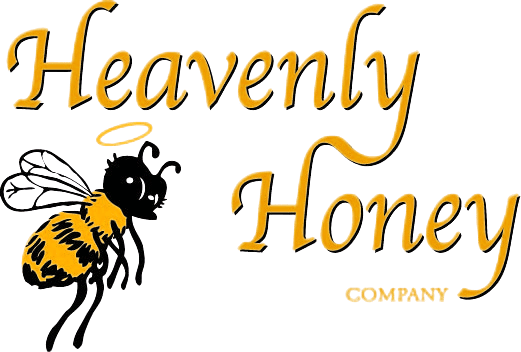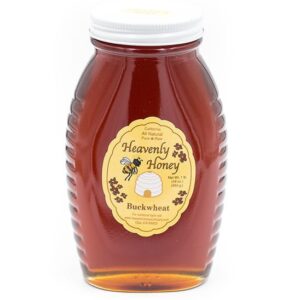
Welcome, Honey Lovers! We’re a family like yours, and we love sweet, sticky honey. As a family-owned business that is deeply committed to all-natural honey production, we have a wealth of behind-the-scenes knowledge that we’re excited to share. So, let’s buzz into “15 Fun Facts About Honey That You Didn’t Know”, focusing on our hardworking California honeybees.
Discover the Luxury of Unfiltered Honey🍯🐝
After indulging your curiosity with our “15 Fun Facts About Honey That You Didn’t Know,” why not take your honey fascination to the next level?
At Heavenly Honey Company, our honey isn’t just a sweetener, it’s a journey. Our Ojai, California-sourced, unfiltered honey holds the pure taste of nature that’s as untamed and wonderful as the bees that created it. Indulge your senses with the luxurious sweetness, natural health benefits, and the unique flavor profiles of raw, unfiltered honey. Embark on a heavenly journey to honey paradise with a simple click.
Taste the difference today – your palate will thank you. Experience the sweet embrace of Mother Nature with Heavenly Honey Company – because nothing beats the real thing.
Now let’s jump into 15 Fun Facts About Honey That You Didn’t Know!
Fact #1: Honey’s Shelf Life
We kickstart our list with an astonishing fact: honey doesn’t spoil! Archaeologists have discovered pots of honey in ancient Egyptian tombs, which were still edible despite being thousands of years old. Honey’s eternal shelf life is due to its low moisture content and acidic pH, both of which create an inhospitable environment for bacteria and other microorganisms.
Fun Fact: Honey is also hygroscopic, meaning it absorbs moisture from the air, which further aids its preservation. The next time you find a jar of honey forgotten at the back of your pantry, remember honey outlasts any other food item you have in your kitchen!
Fact #2: Variety of Honey Flavors
Have you ever wondered why honey tastes differently depending on where it’s sourced? Well, honey comes in many flavors, over 300, to be exact! The flavors range from fruity to floral, nutty to spicy, all depending on the type of flowers visited by the bees.
Fun Fact: Here in California, our bees are spoiled for choice with various blossoms, including avocado, sage, and orange. This means our honey carries a unique flavor, making honey tasting a complex and exciting experience, much like wine tasting.
Fact #3: Bees’ Impressive Travel Distance
The humble honeybee may seem small, but they’re mighty travelers in their own right. Did you know that to produce a single pound of honey, a colony of bees needs to collectively fly approximately 55,000 miles? That’s equivalent to orbiting around the Earth twice!
Fun Fact: They visit around 2 million flowers in this process. So, next time you savor a spoonful of honey, remember the incredible journey it took to get to your table.
Fact #4: Honey’s Role in Wound Healing
We can’t talk about honey without mentioning its healing properties. Ancient civilizations discovered the healing magic of honey thousands of years ago. Today, modern science backs up these claims. Buckwheat honey, in particular, boasts strong antioxidant properties. When applied to wounds, it aids in preventing infections and speeds up the healing process. It’s even used as a topical treatment for minor burns and wounds in some medical practices.
Fun Fact: The secret lies in the antimicrobial properties of honey, especially the dark, nutrient-rich Buckwheat variety. This multifaceted nature makes honey more than just a sweet treat!
Fact #5: Different Bee Roles
Honeybee colonies epitomize efficiency and organization. Every bee in the colony has a specific role based on their age and the needs of the colony. Jobs vary from nurse bees caring for the brood, guard bees safeguarding the hive, to forager bees gathering nectar and pollen.
Fun Fact: The queen bee, the star of the colony, has the vital role of laying eggs, sometimes up to 2000 per day! This perfect division of labor shows why teamwork is key to a colony’s success.
Fact #6: California’s Almond Blossom Honey
In early spring in California, almond trees bloom, offering our bees an early source of pollen . This early source of pollen causes the queen to start laying eggs after a winter of relative rest and this sets the colony growth in motion. A strong colony will be able to gather lots of nectar in the late spring and early summer.
Fun Fact: This period is pivotal for almond growers who depend on honeybees to pollinate their trees. The exchange between the bees and almond blossoms is part of the largest managed pollination event in the world!
Fact #7: Bee Dancing
Communication within a honeybee colony goes beyond simple buzzes. Bees perform an intriguing series of movements, known as the ‘waggle dance,’ to share the location of a food source with their fellow bees. The direction and speed of the dance carry specific information.
Fun Fact: The dance’s direction signifies the direction of the food, while the dance’s speed indicates the distance to the food source. This little dance is a clear demonstration of the sophistication and complexity of bee language.
Fact #8: Honey’s Color Spectrum
Honey doesn’t only differ in flavors but also in colors. Honey hues range from light and clear to dark and cloudy. The flavor intensity is often linked with its color: light-colored honey is typically milder in taste. In comparison, darker honey tends to have a stronger, more robust flavor. Like flavor, color, too, depends on the nectar source.
Fun Fact: Buckwheat honey is dark with a robust taste, while clover honey is light with a mild flavor. So, the next time you buy honey, remember that the color can give you a hint about its taste!
Fact #9: Propolis: Bee’s Multitasker
Bees are nature’s ultimate craftsmen, creating not just honey but also a sticky substance called propolis or ‘bee glue.’ Propolis is a blend of tree resins and bee saliva, serving many purposes within the hive. From sealing small gaps and cracks to sterilizing the hive by fighting off bacteria, propolis is an unsung hero in a bee colony.
Fun Fact: Propolis is rich in antimicrobial compounds, further protecting bees against diseases. Beekeepers often collect propolis for its numerous applications in natural remedies and health products.
Fact #10: Bees’ Winter Survival
Honeybees are masters of adaptation. During winter, when the temperatures drop, bees huddle together to form a “winter cluster.” They vibrate their bodies in unison, creating heat and aiding their survival. Simultaneously, they consume the honey they’ve diligently collected over the warmer months, using it as an energy source to keep going.
Fun Fact: This method allows them to maintain a cozy environment for the queen and the brood, even during the coldest days, promoting the colony’s survival until spring.
Fact #11: Honey’s Natural Preservative
Honey’s resume keeps growing with each fact. Not only is honey a natural sweetener and a wound healer, but it also doubles as a preservative. In the past, honey was widely used to preserve fruits and other perishable food items.
Fun Fact: Honey inhibits the growth of bacteria, yeast, and molds, thanks to its hygroscopic nature and acidic pH. This unique quality, coupled with its natural sweetness, makes honey a cherished ingredient in traditional and modern culinary practices.
Fact #12: Lifestyle of Bees
Honeybees lead an intricate social life. They are ‘eusocial’ insects, which means they live in a highly organized society, marked by a division of labor, cooperation in rearing offspring, and different generations living together.
Fun Fact: This trait stands in contrast with solitary bees, which, as their name suggests, live and breed individually. The social structure of a bee colony is a fascinating study in itself!
Fact #13: California’s Native Bees
While our focus has primarily been on honeybees, it’s important to acknowledge California’s native bees. California is a hotspot for bee biodiversity, with over 1,600 species of native bees.
Fun Fact: Although these native bees may not all produce honey, they play an indispensable role as pollinators, supporting the state’s diverse ecosystems.
Fact #14: Bee Bread
Honey isn’t the only food source in a beehive. Bees also create a product known as ‘bee bread.’ Bees produce it by mixing pollen with honey, creating a protein and nutrient-rich food source.
Fun Fact: Bee bread serves as the main source of nourishment for most bees in the hive, particularly the developing brood. Beebread is yet another testament to the resourcefulness and adaptability of bees.
Fact #15: Bees’ Role in the Food Chain
Rounding up our list, we couldn’t overlook the crucial role honeybees play in our food chain. They are responsible for pollinating a wide variety of plants, spreading pollen, and enabling these plants to produce fruits, vegetables, and nuts.
Fun Fact: The role bees play in agriculture is so significant that it’s estimated one-third of the food we consume relies on pollinators like bees. This fact underscores the importance of protecting and conserving our buzzing friends.
15 Facts About Honey Conclusion
So, there you have it, our 15 fun facts about honey. We hope that these insights into the secret life of bees and their sweet creation give you a new appreciation for your next dollop of honey. As custodians of the environment, let’s strive to create a world that’s friendly for our little friends, the bees. After all, a world without bees would be a world a lot less sweet.




